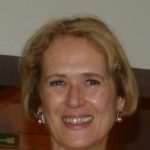Link to Pubmed [PMID] – 3290898
Proc. Natl. Acad. Sci. U.S.A. 1988 Jul;85(13):4610-4
The mechanism of promoter location by DNA-dependent RNA polymerase of Escherichia coli was investigated. The occupancies of DNA fragments carrying the A1 promoter of bacteriophage T7 were analyzed as a function of the length of flanking sequences adjacent to the promoter. Competition between the promoters on different fragments showed qualitatively that DNA sequences downstream of the promoter enhanced promoter occupancy, whereas upstream flanking sequences had little or no influence on occupancy. This was studied quantitatively by using a set of DNA fragments with four identical A1 promoters (I-IV) equidistant from each other, but with different lengths of flanking sequences upstream from promoter I and downstream from promoter IV. The relative occupancies of these promoters showed that downstream DNA sequences of up to 250 base pairs increased the occupancy of the adjacent promoter, whereas upstream sequences longer than 70 base pairs had little or no effect on occupancy. Promoter occupancies measured as a function of the length of the downstream flanking DNA sequences were fit by a published theory that takes into account an enhancement of signal-sequence location by linear diffusion.

